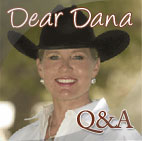More with Les: The Five Easy Pieces
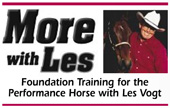 Continuing in a Series
Continuing in a Series
In the next few installments, Les Vogt takes you through exercises of his Five Easy Pieces. When you’ve mastered them, you should be able to put any part of your horse’s body where you want it, without resistance.
This time, we will continue discussing the parts of Exercise No. 1: Lateral Flexion.
More with Les: The Five Easy Pieces
Exercises to move and take control of your horse’s different body zones
 Continuing in a Series
Continuing in a Series
In the next few installments, Les Vogt takes you through exercises of his Five Easy Pieces. When you’ve mastered them, you should be able to put any part of your horse’s body where you want it, without resistance.
Exercise No. 1: Lateral Flexion
Even if you have a trained horse that you have ridden for years, it’s important you don’t skip this section. If you’re tempted, ask yourself these questions:
More with Les: The Five Easy Pieces
Exercises to move and take control of your horse’s different body zones
 Continuing in a Series
Continuing in a Series
In the next few installments, Les Vogt takes you through exercises of his Five Easy Pieces. When you’ve mastered them, you should be able to put any part of your horse’s body where you want it, without resistance.
More with Les: The Five Easy Pieces
Exercises to move and take control of your horse’s different body zones
 First in a Series
First in a Series
In the next few installments, Les Vogt takes you through exercises of his Five Easy Pieces. When you’ve mastered them, you should be able to put any part of your horse’s body where you want it, without resistance.
Doesn’t it take your breath away to watch a sensational reining or cow horse perform? It does to me, just like it did back when I was a kid and I saw my first stock horse in action. But the best thing about it is that these horses just keep getting better and better. First, because we’re breeding them better, and second, because we’re riding them better. And the biggest key I have found in developing that brilliant performance is the time that I spend getting complete body control during the foundation stage of my training on a young horse.
More with Les: Roll Back Exercises
Improve roll backs, spins and stops
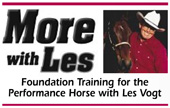 NOTE: In the next few installments of this series, Les Vogt gives you some simple exercises that will improve roll backs, spins and stops.
NOTE: In the next few installments of this series, Les Vogt gives you some simple exercises that will improve roll backs, spins and stops.
Using the Exercises for Spins. Lope a circle, again making sure your stirrup passes within that 1 foot distance from the fence. When you feel that your horse is in good form, begin to spiral down to a spin in the middle of the circle. Start to drive with your outside leg when the circle diameter is about 10 feet. Make sure that your horse stays softly collected and start to cluck when you reach this point. You should never drag or pull your horse into a spin, you chase him into a spin.
Speed Control
Foundation Training for the Performance Horse with Les Vogt
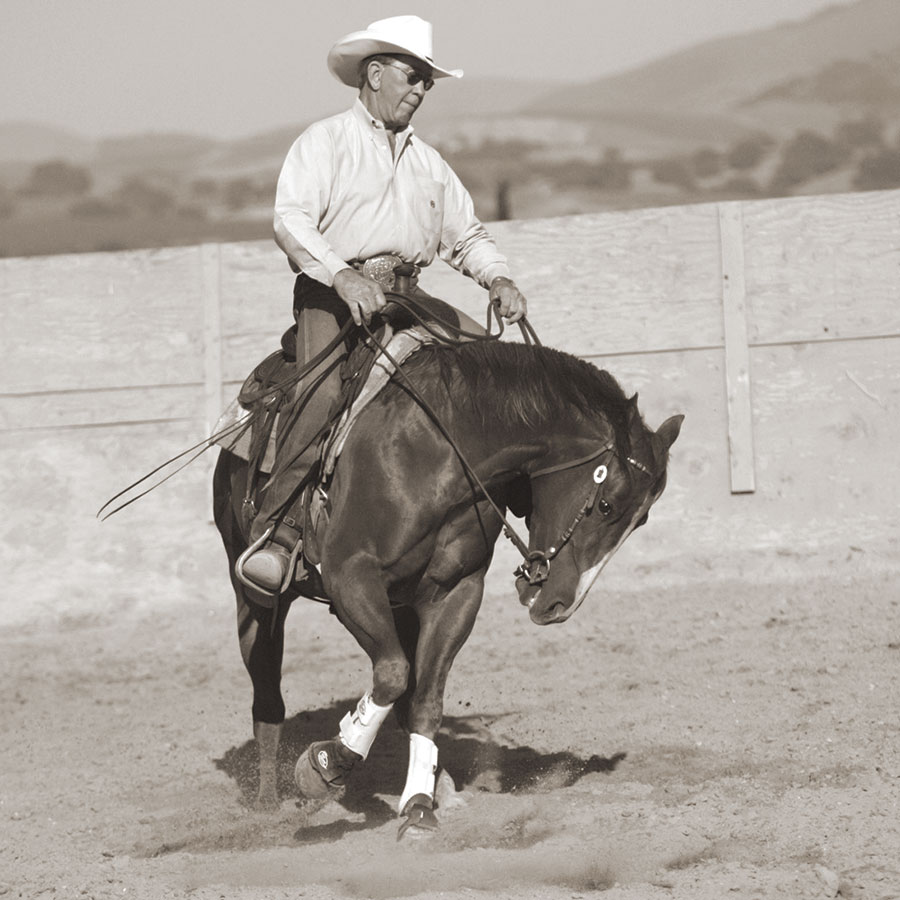
What is speed control? It’s when we are moving at any gait and have the capacity to reduce or increase speed at will, with little or no effort on the part of the rider. There are a lot of ways to cue a horse to change speeds, but what we will work with here is the concept of riding with the motion. There are three actual ways to ride a horse’s motion: most people ride with the motion; a racehorse jockey leans forward and rides a half stride ahead of the horse to encourage speed; and lot of our real good riders ride a half stride behind the motion—where their weight and position are actually creating some resistance for the horse’s movement. It would be like if you tied a sack of rocks on one horse and had no rocks on another horse; the horse with the rocks tied on him is going to stop way before the horse without the rocks. Why? Because the rocks go against his motion so he slows down after a period of time.
Four more zones to ‘stops’
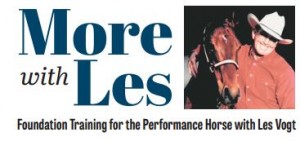 Last column, I introduced you to an entire stopping program that began with “whoa” and proceeded to the next phase, the “signal stop.”
Last column, I introduced you to an entire stopping program that began with “whoa” and proceeded to the next phase, the “signal stop.”
Random Stop
So, when he has learned the signal stop, we go into the next phase, which is going to be random stops. We take what he knows now, and we teach him that he is going to gallop or trot around the arena. As with the other steps, this one has to be in all of his gears or gaits as well. He has to graduate up to the gallop. Now, at this stage in the game, the walk probably is not going to count, but he has to master the trot and the gallop for sure, and he has to be perfect in both.
Seven Steps To Big Stops
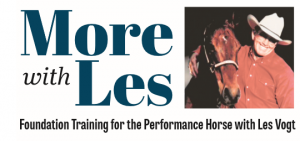 Now, I’m going to introduce you to the whole stopping program so you’ll know where we’re going with this. Although we’ll only cover the basics – the collected stop – in this level, this will give you an idea of where we’ll be headed as you advance in this program. We’ll call the stopping program the “Seven Steps to Big Stops.” The seven steps are sequential, and you have to pass each step, and get a good grade in each phase, or you can’t go on. I guess you could but you’re going to get an “F” in the next one. It will take time, but you will get it, and like everything else, you have to work at achieving perfect form at each step so that you can get perfect performance.
Now, I’m going to introduce you to the whole stopping program so you’ll know where we’re going with this. Although we’ll only cover the basics – the collected stop – in this level, this will give you an idea of where we’ll be headed as you advance in this program. We’ll call the stopping program the “Seven Steps to Big Stops.” The seven steps are sequential, and you have to pass each step, and get a good grade in each phase, or you can’t go on. I guess you could but you’re going to get an “F” in the next one. It will take time, but you will get it, and like everything else, you have to work at achieving perfect form at each step so that you can get perfect performance.
We might say that a horse stops well, but there is really so much more to it. Stopping means to cease forward motion, but the stop itself is really the least of my worries. First, the approach has to be good, the form has to be perfect, and there can be absolutely no resistance – if any of these elements aren’t great, the stop won’t be great either.
The Sequence Stop
More with Les - Foundation Training for the Performance Horse with Les Vogt
 Sequence stop means a three stepper basically. You’ll have three or four steps from the beginning to the end for the stop. If you’re having problems keeping your hands moving, try the sequence stop. Remember, if you like the neck, you’re going to back him out of the stop. If you don’t like the neck, you’re going to drive him forward again, so why would you stop moving your hands? And don’t worry about timing here; you’re just searching for flaws throughout those beats.
Sequence stop means a three stepper basically. You’ll have three or four steps from the beginning to the end for the stop. If you’re having problems keeping your hands moving, try the sequence stop. Remember, if you like the neck, you’re going to back him out of the stop. If you don’t like the neck, you’re going to drive him forward again, so why would you stop moving your hands? And don’t worry about timing here; you’re just searching for flaws throughout those beats.
Two things to avoid
Horsemanship is negotiation and a good negotiation is when I get what I want, and you think you got what you wanted!
 When you are ready for the stop and you take away your legs, don’t say “whoa.” We don’t want a crisp hard stop yet. We want a beautiful energy transfer from the front of the horse to the back, one that just melts. What you are going to feel when it’s right is that there is actually an energy current that goes from his poll, down his spine and to his hind legs. You can stop a litt le harder but don’t say “whoa” at this point; you’re lett ing him melt, and saying “whoa” means “get it into the ground.”
When you are ready for the stop and you take away your legs, don’t say “whoa.” We don’t want a crisp hard stop yet. We want a beautiful energy transfer from the front of the horse to the back, one that just melts. What you are going to feel when it’s right is that there is actually an energy current that goes from his poll, down his spine and to his hind legs. You can stop a litt le harder but don’t say “whoa” at this point; you’re lett ing him melt, and saying “whoa” means “get it into the ground.”
Be careful too that you don’t do a weight transfer with your body as you approach the stop or as you take your legs away. If you do that, you will throw in an element of timing that you are responsible for, and why do you want to do that? Keep your body still so the horse is just reacting to your legs.


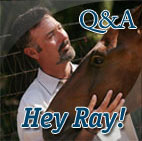
 Read Columns
Read Columns
